Δεν υπάρχουν προϊόντα στο καλάθι.
ΒΙΒΛΙΑ
Δημοφιλή Προϊόντα
-
Ιωάννου Δ. Χριστοφίλου – Το Σολφέζ των Αρχαρίων – Music Lovers – Βιβλίο Solfege
Σελίδες: 80
Γλώσσα: Ελληνικά
Εκδόσεις: Music Lovers€8,10€9,50Άμεσα Διαθέσιμο
-
Ιωάννου Δ. Χριστοφίλου – Το Σολφέζ της Δεύτερης Τάξης – Music Lovers – Βιβλίο Solfege
Σελίδες 64
Εκδόσεις Music Lovers
€8,10€9,50Άμεσα Διαθέσιμο
-
Amedee Reuchsel – Μελωδικές Ασκήσεις, Τεύχος 3 – Gaitanos Publications – Βιβλίο Solfege
Μελωδικές ασκήσεις. Τεύχος Τρίτο.
€9,00€10,60Άμεσα Διαθέσιμο
-
Amedee Reuchsel – Solfege Vol. 2 – Φίλιππος Νάκας – Βιβλίο Solfege
Μελωδικές ασκήσεις στο κλειδί του Σολ
€12,50€14,50Άμεσα Διαθέσιμο
-
Amedee Reuchsel – Solfege Vol. 4 – Φίλιππος Νάκας – Βιβλίο Solfege
Μελωδικές ασκήσεις στο κλειδί του Σόλ-Περιέχει διασκευές κομματιών από γνωστούς κλασικούς συνθέτες.
€12,90€15,20Άμεσα Διαθέσιμο
-
Amedee Reuchsel – Μελωδικές Ασκήσεις, Τεύχος 4 – Gaitanos Publications – Βιβλίο Solfege
Μελωδικές ασκήσεις στο κλειδί του Σόλ-Περιέχει διασκευές κομματιών από γνωστούς κλασικούς συνθέτες.
€9,00€11,30Άμεσα Διαθέσιμο
ΜΟΥΣΙΚΑ ΒΙΒΛΙΑ
-
-
Franz Schubert’s symphonies
This overall presentation of Franz Schubert’s symphonies, written by prominent authors, follows the proven work introductions to Beethoven’s, Brahms and Bruckner’s symphonies in conception:The work introduction is characterized by:- Generally understandable presentation- Separate chapters for each symphony with a description of the work, documents, and essay on overriding questions- Brief biography of Schubert- Impact of Schubert’s symphonies on those around us and on posterityThe authors:Marie-Agnes Dittrich, Christine Fischer, Peter Gülke, Rüdiger Heinze, Hans Joachim Kreutzer, Michael Kube, Jutta Pumpe, Doris Sennefelder, Wolfgang Stähr, Michael Stegemann, Renate Ulm, Egon Voss. The publisher Renate Ulm has been an editor in the music department of Bayerischer Rundfunk since 1989.
Introduction
Composer / Author:
Sennefelder, Doris
“Existing through my pain”. Notes on the work of Franz Schubert
Composer / Author:
Gulke, Peter
How and in what way was Schubert symphonic?
essay
Composer / Author:
Kube, Michael
I. Symphony in D major (D 82)
Work review and essay
Composer / Author:
Voss, Egon
II. Symphony in B flat major (D125)
Work review and essay
Composer / Author:
Stegeman, Michael
III. Symphony in D major (D 200)
Work review and essay
Composer / Author:
Heinze, Rudiger
IV. Symphony in C minor (Tragic Symphony – D 417)
Work review and essay
Composer / Author:
Ulm, Renate
V. Symphony in B flat major (D 485)
Work review and essay
Composer / Author:
Staehr, Wolfgang
VI. Symphony in C major (D 589)
Work review and essay
Composer / Author:
Gulke, Peter
VII. Symphony in B minor (The unfinished – D 759)
Work review and essay
Composer / Author:
Dittrich, Marie-Agnes
VIII. Symphony in C major (“Great” C major symphony – D 944)
Work review and essay
Conclusion:
Composer / Author:
Pump, Jutta
Spheres of activity: Schubert’s path to becoming a freelance artist
essay
Composer / Author:
Kreutzer, Hans-Joachim
Schubert as reflected in literature
essay
About the authors
literature€18,80€20,90Franz Schubert’s symphonies
€18,80€20,90Διαθέσιμο σε 1-3 ημέρες
-
Schubert – Sonata In A Minor Arpeggione for Viola & Piano
This volume is based on the Urtext of the New Schubert Edition; the solo part has been arranged for the performance on the viola while the piano part is identical to Schubert´s original as presented in the New Schubert Edition.€24,60€27,30Διαθέσιμο σε 1-3 ημέρες
-
Bornemann – Little Paganini For Violin and Piano
Year-long experience in teaching children violin gave the impulse to this unique collection of etudes. In these pieces, the wellknown violin teacher Christiane Bornemann makes use of tonepainting with titles such as “The Snake”, “Clowns” and “Dance of the Dwarfs”.The parts of both instruments are kept at an easy level of difficulty.
Pages: 24 Book & 4 Parts
Language: English / German
Publisher: Barenreiter€10,70€11,90Bornemann – Little Paganini For Violin and Piano
€10,70€11,90Διαθέσιμο σε 1-3 ημέρες
-
Mozart – Violin Concerto Nr.1 In Bb Major
Mozart, Wolfgang Amadeus – Concert Nr.1 In Bb Major
For Violin and Piano
Suggestions for performance by Igor Ozim
Duration: 23 min.
Piano Reduction: Lilia Vásquez
Score Pages: 32
Violin Part Pages: 11
Language: German, English
Publisher: Barenreiter€9,80€10,90Mozart – Violin Concerto Nr.1 In Bb Major
€9,80€10,90Διαθέσιμο σε 1-3 ημέρες
-
Jan Kubelik – Burlesque
The Burleska (Burlesque) by Jan Kubelik (1880-1940), a virtuoso and composer who made Czech violin art famous all over the world and was called a new Paganini, was written in 1928.Like most of Kubelik’s works for violin and piano, it is distinguished by perfect instrumental stylisation and requires considerable technical brilliance on the part of performers.
Pages: 24
Language: Czech
Publisher: Editio Barenreiter Praha€15,40€17,10Jan Kubelik – Burlesque
€15,40€17,10Διαθέσιμο σε 1-3 ημέρες
-
Pohl – Das Klarinettenspiel, Band 1
This clarinet method is primarily aimed at children. However, due to the systematic structure and methodology, it is equally suitable for adults. A large number of one- to three-part pieces enable use in both individual and group lessons.
Folk songs and well-known classical melodies (including clarinet solos from orchestral works) are complemented with jazzy, rocky and other original compositions by the author to create a stylistically diverse educational work. In between there are always suggestions for improvisation. Both the German and the French system were taken into account for the fingerings.
Content
Vorwort
Das Blatt
Die Atmung
Der Ansatz
Ansatzübung
Der Anstoß
Anstoßübung: Wer spielt den längsten Ton
Ganze Note: Wörterspielen
Halbe Note
Takt
Viertelnote: Frage und Antwort / Namen spielen / Vorbeifahrende Autos / Die kleine Bimmelbahn / Echo
Viertelpause: Hinkeln / Schokolade / Tänzchen / Spiel zu zweit
Auftakt: Freizeit / Spiel
Halbe Pause: Lauf mit kurzen Pausen / Duett / Akzent: Hüpfen / Sommerspaziergang / Storchenlied / Die Feuerwehr
Achtelnote: Schneck im Haus / Kinderlied aus Ungarn / Spiel mit Ede / Fröhliches Spiel / Alle meine Entchen / Der Pinguin / Hänschen kle / Kuckuck / Kleine Schaukel / Kreuzende Wege / Pferdchen-Duett
Legato: Wettschwimmen / Eine Radtour
Punktierte Note: Erster Walzer / Tanz / Langsame Rumba
Staccato: Schneeflocken / Springtanz / Das ist schön / Wintertag / Ganze Pause: der Clown / Eswar eine Mutter / Ententanz / Fuchs, du hast die Gans gestohlen
Die Blümelein, sie schlafen / Walzer (aus “Der Zigeunerbaron”) / Bruder Jakob / Russische Melodie
Vorzeichen “Kreuz”: Karussel / Wann und wo- Tonleiter
Vorzeichenregeln: Bergauf und bergab / Dauerlauf
Achtelpause: Hopp, hopp, hopp / Westerm Song / Freuzt’ euch des Lebens / Wiegenlied
Sechzehntelnote: Anfahrender Zug / Puppenntanz / Im Frühtau zu Berge / Der Vogelfänger bin ich ja (aus die “Zauberflöte”) / Beim Einschlafen / Entspannung mit tieefen Tönen
Haltebogen: Oldtimerfahrt / Calypso
Vorzeichen “Be”: Dauerlauf in F / Alle Vögelsind schon da / Echospiel / Festwalzer / Menuett (für Anna Magdalena Bach) / Amazing Grace
Auflösungszeichen: Blues in G
Grifftabelle deutsches System
Grifftabelle französisches System
Pages: 64
Language: German
Publisher: Barenreiter€15,40€17,10Pohl – Das Klarinettenspiel, Band 1
€15,40€17,10Διαθέσιμο σε 1-3 ημέρες
-
Pohl – Das Klarinettenspiel, Band 2
This clarinet method is primarily aimed at children. However, due to the systematic structure and methodology, it is equally suitable for adults. A large number of one- to three-part pieces enable use in both individual and group lessons.
Folk songs and well-known classical melodies (including clarinet solos from orchestral works) are complemented with jazzy, rocky and other original compositions by the author to create a stylistically diverse educational work. In between there are always suggestions for improvisation. Both the German and the French system were taken into account for the fingerings.
In the 2nd volume, the entire tonal range up to c“` is opened up, including all semitones. The scores extend to sixteenths, eighth-note triplets and double dotting. In order to familiarize the students with the possibilities of musical expression, there are a large number of character pieces that appeal to the students’ imagination and world of experience. In addition, the most important musical phenomena are introduced in a practical way according to the principle “first experience – then explain”.
Content
Vorwort
Schwingendes Pendel
Triole
Amazing Grace
Eine Autofahrt
Altfranzösisches Lied (Tschaikowsky)
Unos quieren con alma
Fröhliches Springen
Wer spielt die meisten Töne mit einem Griff
Schaukeln
Abendstille überall
Dur-Tonleiter / C-dur
Moll-Tonleiter / a-moll
Dur-Dreiklang / Moll-Dreiklang
Alle Vögel sind schon da (C-dur)
Accelereando / Ritardando
Eisenbahnfahrt
Schwere Last
Portato
Tenuto
Sanftes Berühren
An die Freude (Beethoven)
D-dur
D-Dance
Treppentanz
Dreh dich
Wilder Tanz
Auf dem See
Irische Volksweise
d-moll
Einsamkeit
Go down, Moses
Harmonisches Moll / Leitton
Melodisches Moll
Linien in melodisch Moll
Rolle über cis’
Dorisch
Scarborough Fair
Wie erkennt man eine Tonart
Dynamische Zeichen (Lautstärkebezeichnungen)
Sonniger Tag
Bolero (Ravel)
Fünfertanz
Hard To Bear
Artikulationsarten
Rhythmischer Spaß
Arie aus der Oper “La Traviata” (Verdi)
Fanfare
Trost
Soft Rock
A-dur / a-moll harmonisch und melodisch
Lauf im Regen
Doppelt punktierte Note
Geradeaus
Genau
Allein
Tanz im Freien
Am nächsten Morgen
Da capo al #
Tanz auf dem Dorffest
Thema aus Tschaikowskis 6. Sinfonie
B-dur
Soothing
Enharmonische Verwechselung
Fließen
Deutscher Tanz (Schubert)
Thema und Variationen
7-Blues
Aus einer anderen Zeit
Lydisch
L’isle joyeuse (Debussy)
Auf der Höhe
Von fremden Ländern und Menschen (Schumann)
Grifftabelle (Deutsches System)
Grifftabelle (Französisches System)
Pages: 64
Language: German
Publisher: Barenreiter€15,40€17,10Pohl – Das Klarinettenspiel, Band 2
€15,40€17,10Διαθέσιμο σε 1-3 ημέρες
-
Pohl – Das Klarinettenspiel, Band 3
The volume is intended both as a performance book and as part 3 of the clarinet method. In it, the tonal space of the high register (cis ,,, to c ,,,, ) is developed. When designing the entire school work, special emphasis was placed on the development of rhythmic skills right from the start. This is continued in Volume 3.
In addition, all important musical terms including intervals and scales are explained. Solo pieces and duets alternate with pieces for one or two clarinets with piano accompaniment or with chord symbols for the guitar. Classical pieces (almost exclusively) with original clarinet parts complement each other with jazzy or stylistically varied compositions by the author to create a challenging performance book for advanced students.
Content
Vorwort
Vorschlagnote
Melancholie
Sekunde
Kegelduett (Mozart)
Terz
Tiefer Süden
Triller
Invention
Menuett (Bizet)
Quarte- Ferien
Zweiunddreißigstelnote
Erwachen am Moregn
Die Hebriden (Mendelssohn Bartholdy)
Szene am Bach (Beethoven)
Taktwechsel
Neuer Zwiefacher
Quinte
Stimmungswechsel
Blues-Schema
Blues-Improvisation
Unter Palmen
Doppelkreuz, Doppel-Be
Allegro con grazia (Tschaikowski)
Vierteltriole
3-4-4-2-Blues
Praller, Mordent,Doppelschlag
Ein altes Märchen
Phrygisch
Stille Trauer
Thema (Weber)
Dämmerung in Kingston
Sahara
Quintole
Allegretto(Brahms)
Mixolydisch
Auf dem Balkan
Swing
Slow Blues
Rock and Swing
Duole
Sexte
Chanson
Vorspiel aus “Göttersdämmerung” (Wagner)
Glissando
Sherele
Chromatische Tonleiter
Ganztonleiter
Ungarische Rhapsodie Nr. 2 (Liszt)
Septole
Bossa
Tritonus
Septime
Zum Gipfel
Grifftabellen: Deutsches und Französisches System
Pages: 88
Language: German
Publisher: Barenreiter€15,40€17,10Pohl – Das Klarinettenspiel, Band 3
€15,40€17,10Διαθέσιμο σε 1-3 ημέρες
-
Mozart – Violin Concerto Nr.2 In D Major
Mozart, Wolfgang Amadeus – Concert Nr.2 In D Major
For Violin and Piano
Suggestions for performance by Igor Ozim
Duration: 21 min.
Piano Reduction: Lilia Vásquez
Score Pages: 22
Violin Part Pages: 8
Language: German, English
Publisher: Barenreiter€9,80€10,90Mozart – Violin Concerto Nr.2 In D Major
€9,80€10,90Διαθέσιμο σε 1-3 ημέρες
-
Mozart – Concerto Nr.2 In D Major KV 211
Mozart, Wolfgang Amadeus – Concert Nr.2 In D Major
For Violin and Piano
The Authoritative Performing Edition
– New easy to play keyboard reduction
– Violin part with the Urtext of the New Mozart Edition
– Additional violin part with fingerings, bowings and performance comments
– Additional brochure with cadenzas and transitions
Editor: Mahling, Christoph-Hellmut
Piano Reduction: Schelhaas, Martin
Fingering, Bowing and comments on performance: Wulfhorst, Martin
Score Pages: 32
Unmarked Violin Part Pages: 9
Marked Violin Part Pages: 9
Cadenzas and “Eingänge” Pages: 7
Language: German, English
Publisher: Barenreiter€15,90€17,60Mozart – Concerto Nr.2 In D Major KV 211
€15,90€17,60Διαθέσιμο σε 1-3 ημέρες
-
Mendelssohn – Concerto in E Minor Op.64
Mendelssohn Bartholdy, Felix
Concerto for Violin and Orchestra in E minor Op.64
Late version 1845
– First ever Urtext edition of both versions of op. 64
– Critical Commentary (Engl.) included with full score
– Informative preface (Engl. / Ger.)
– Piano reductions each with an Urtext violin part and a second violin part prepared with fingerings and bowings.
In 1838 Felix Mendelssohn wrote to the violin virtuoso Ferdinand David informing him that he was working on a violin concerto “… the opening theme, one in E minor runs through my head and it gives me no peace”; the concerto in the state described by Mendelssohn to David was never published in a performing edition – it was only rediscovered in 1988.
One would think that such an important work would be adequately represented in modern editions true to the sources. Alas not even the score used today represents the orchestral parts Mendelssohn saw to print in 1845, but one heavily edited in the 1860s by Julius Rietz for the Mendelssohn Complete Edition.
For the Bärenreiter Urtext edition, the Mendelssohn specialist R. Larry Todd has edited both the original version of the concerto as well as the later version known today.
The first version of the concerto calls for the soloist to perform the orchestral tuttis , contains a shorter cadenza by Mendelssohn, many solo violin pitches in different octaves, passages with different orchestral scoring and many many surprises regarding articulation and dynamics.
The later version goes back to the first edition orchestral parts published in 1845 and the piano reduction sanctioned by Mendelssohn.
Todd makes use of all known sources including the letters between Mendelssohn and David as well as Mendelssohn and the original publishers where general schemes as well as specifics of articulation were exchanged.
This first ever Urtext edition of one of the most popular violin concertos in the repertoire finally gives performers the opportunity of playing just what Mendelssohn wrote.
The Bärenreiter Urtext edition offers the two versions of op. 64 back to back in score and parts together with facsimiles, an informative preface describing the genesis of the composition and a detailed critical commentary.
Editor: Todd, R. Larry
Score Pages: 45
Violin Part Pages: 16×2
Language: English, German
Publisher: Bärenreiter€22,50€25,00Mendelssohn – Concerto in E Minor Op.64
€22,50€25,00Διαθέσιμο σε 1-3 ημέρες
-
Martinu – Concerto for 2 Violins And Orchestra
Martinů, Bohuslav Jan – Concerto
for 2 Violins and Orchestra
(Piano Reduction)
Editor: Šolc, Karel
Score Pages: 61
Violin Part Pages: 16 x 2
Language: English, German, Czech
Publisher: Bärenreiter€32,90€36,60Martinu – Concerto for 2 Violins And Orchestra
€32,90€36,60Διαθέσιμο σε 1-3 ημέρες
-
Mendelssohn – Concerto In E Minor Op.64 1844-1845
Mendelssohn Bartholdy, Felix
Concerto for Violin and Orchestra in E minor Op.64
Early version 1844 and late version 1845
Set of Two Books ( Piano Reduction & Violin Part)
In 1838 Felix Mendelssohn wrote to the violin virtuoso Ferdinand David informing him that he was working on a violin concerto “… the opening theme, one in E minor runs through my head and it gives me no peace”; the concerto in the state described by Mendelssohn to David was never published in a performing edition – it was only rediscovered in 1988.
One would think that such an important work would be adequately represented in modern editions true to the sources. Alas not even the score used today represents the orchestral parts Mendelssohn saw to print in 1845, but one heavily edited in the 1860s by Julius Rietz for the Mendelssohn Complete Edition.
For the Bärenreiter Urtext edition, the Mendelssohn specialist R. Larry Todd has edited both the original version of the concerto as well as the later version known today.
The first version of the concerto calls for the soloist to perform the orchestral tuttis , contains a shorter cadenza by Mendelssohn, many solo violin pitches in different octaves, passages with different orchestral scoring and many many surprises regarding articulation and dynamics.
The later version goes back to the first edition orchestral parts published in 1845 and the piano reduction sanctioned by Mendelssohn.
Todd makes use of all known sources including the letters between Mendelssohn and David as well as Mendelssohn and the original publishers where general schemes as well as specifics of articulation were exchanged.
This first ever Urtext edition of one of the most popular violin concertos in the repertoire finally gives performers the opportunity of playing just what Mendelssohn wrote.
Editor: Todd, R. Larry
Violin PerformancePart: Wulfhorst, Martin
Score Pages: 89
Violin Part Pages: 32×2
Language: English, German
Publisher: Bärenreiter€42,30€47,00Mendelssohn – Concerto In E Minor Op.64 1844-1845
€42,30€47,00Διαθέσιμο σε 1-3 ημέρες
-
Meyerbeer – Quintet in E flat major
The source-critical edition is the first edition of the clarinet quintet, which was lost after the Second World War; it was only recently found in the estate of the clarinettist Carl Bärmann. Meyerbeer wrote this quintet in Vienna in 1813 for his friend, the celebrated clarinettist Heinrich Bärmann, to whom CM von Weber also dedicated a number of compositions. The virtuosic treatment of the clarinet is new and unusual for the time. Meyerbeer allows them to emerge clearly from the strings, almost reaching the limits of their technical possibilities. Meyerbeer’s clarinet quintet enriches the already sparse literature for clarinet in the field of chamber music in the 19th century. The scientifically critical edition makes this masterpiece accessible for practice for the first time. In addition to the pure musical text, it offers a detailed foreword that introduces the history of the work, as well as a critical report. Dieter Klöcker set up the voices for practical use.€28,50Διαθέσιμο σε 1-3 ημέρες
-
Schubert – String Quintet in C major op. post 163 D 956
Pages; 19/19/19/19/19€29,50Διαθέσιμο σε 1-3 ημέρες






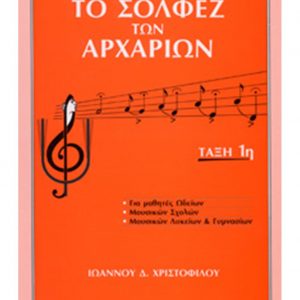
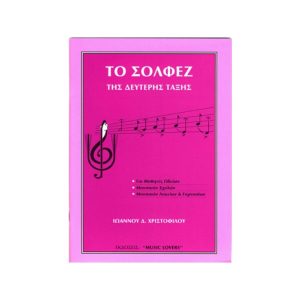
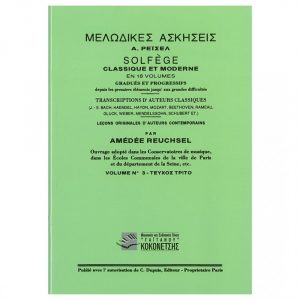
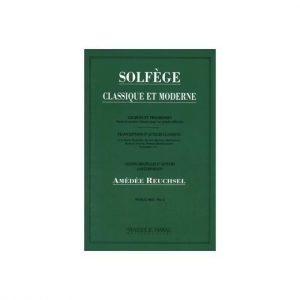
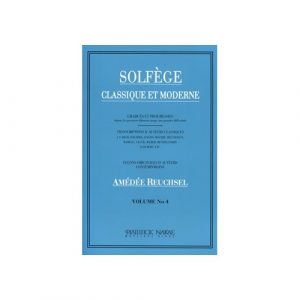
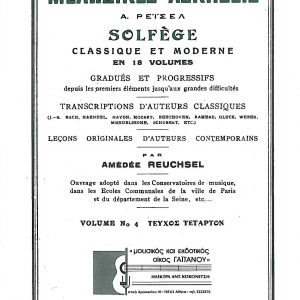


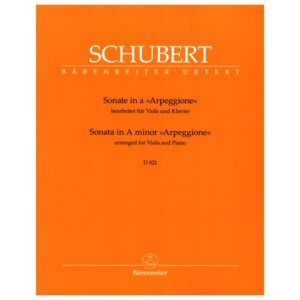


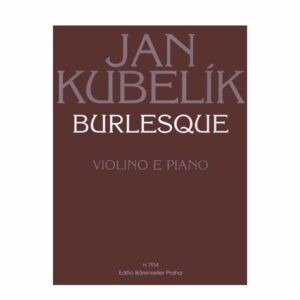

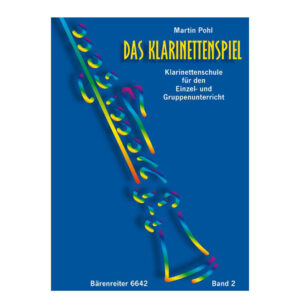


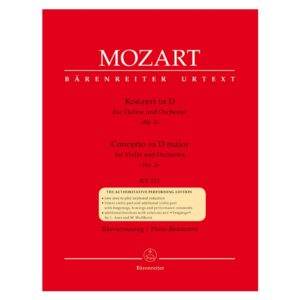
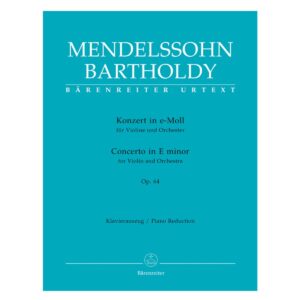





Die Vokalen Aspekte des Barocken Musiktheaters:
Vom “recitar cantando” zur römischen Oper
Monteverdi
Cavalli und Cesti
Legrenzi, Sartorio, P. A. Ziani und Pollarolo
C. Pallavicino und Steffani
Scarlatti
Das goldene Zeitalter: Von Lotti bis Händel
Einige Besonderheiten der Barocken Oper
Die Kastraten und die Gesangskunst ihrer Zeit
Die Sturm-Arien
Die Buffo-Rollen
Rossini:
Rossinis Vorstellungen von Melodie und Gesang
Einige Merkmale von Rossinis Vokalstil
Die Gesangstypen Rossinis
Der Gesang in der Ära Rossinis. Aufführungspraxis. Der Gesang aus der Sicht Stendhals
Tod und Auferstehung des Belcanto
Verzeichnis der Namen und Werke